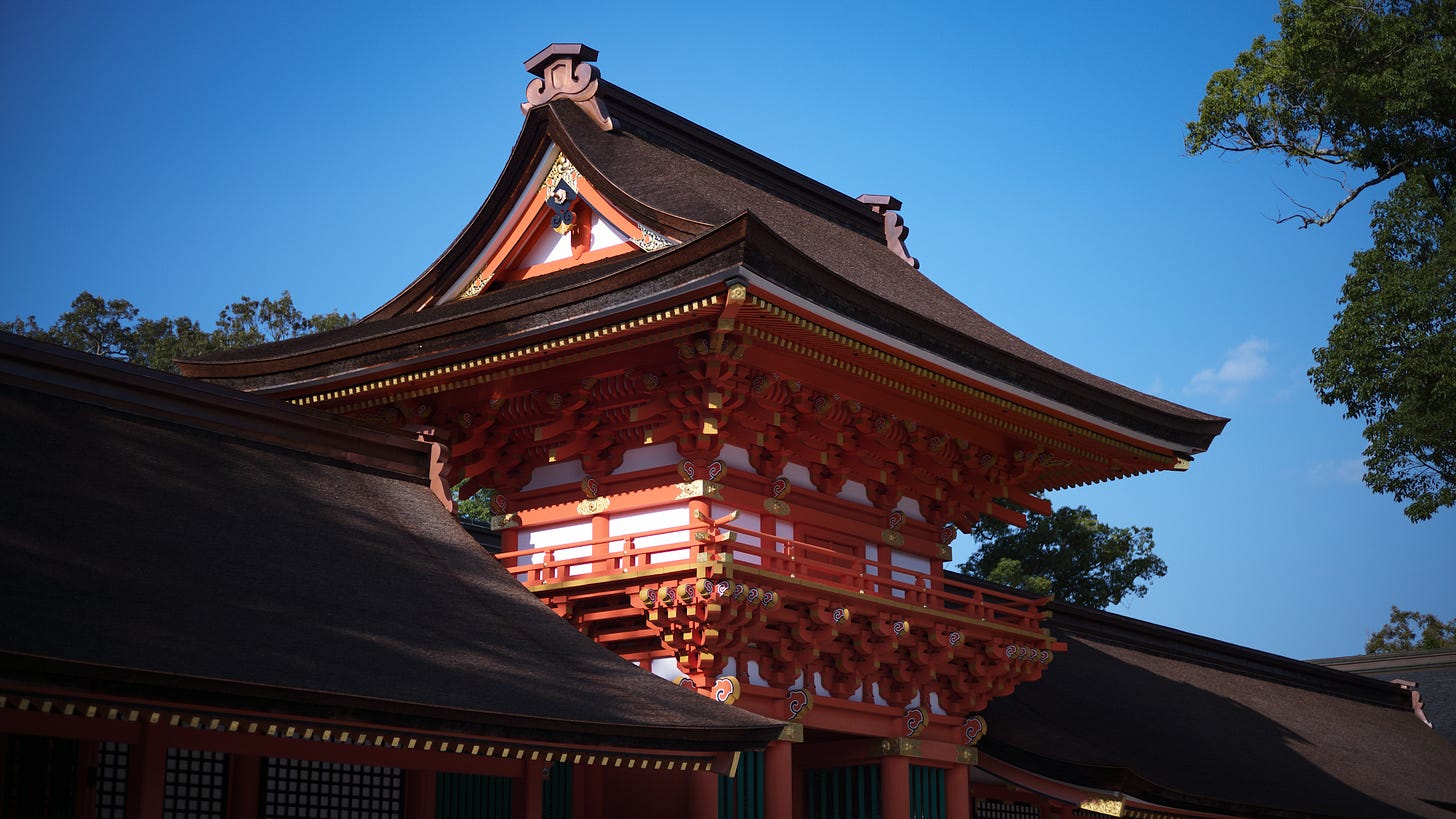Today, I am in Usa City, coming from the Kunisaki Peninsula in Oita Prefecture. This region was once known as Bungo Province, and within it, Usa Jingū has been enshrined for 1700 years as the highest-ranking sacred site. Even today, countless visitors continue to come, but the enshrined deities of this shrine, as well as the deep layers of its faith, are entangled in a history so complex that it cannot be easily unraveled.
The first place I visited to trace the ancient history of Usa Jingū was Nata-no-Miya (奈多宮). Located on the southeastern coast of the Kunisaki Peninsula, Nata-no-Miya is said in the secret traditions of Usa Jingū to be the very spot where its deity first descended. Offshore, a small rocky islet with a torii gate stands, and this is called Ichikishima (市杵島). Ichikishima is connected to the worship of Ichikishimahime-no-Mikoto (市杵島姫命), one of the three Munakata goddesses enshrined at Munakata Taisha in Fukuoka, and since ancient times, it has been revered as the first place where Hime-Ōkami (比売大神, a collective deity of the three Munakata goddesses) descended.



